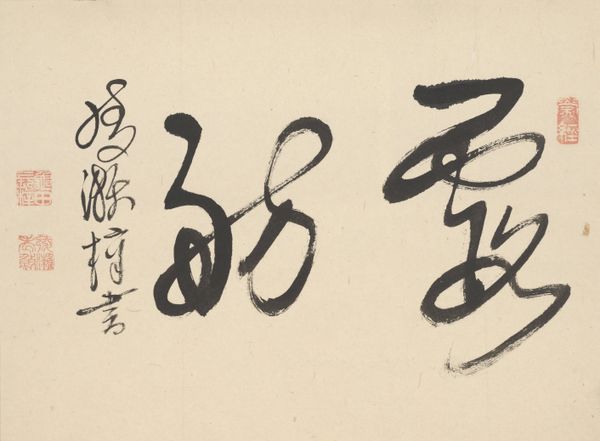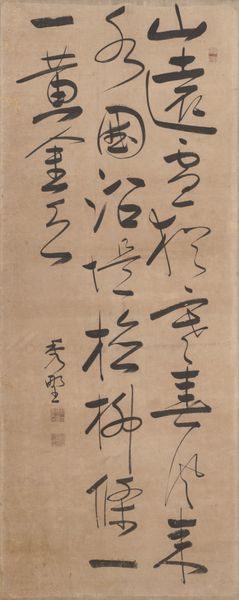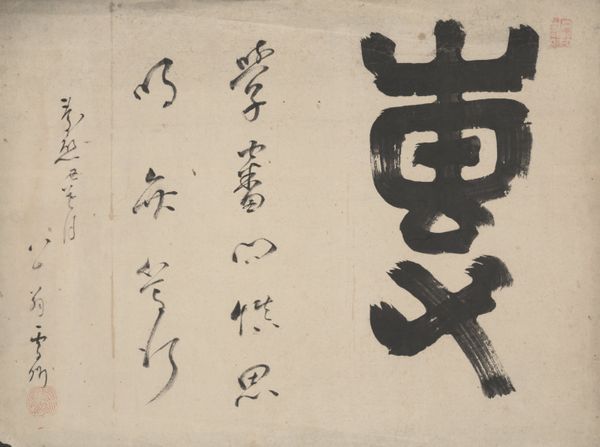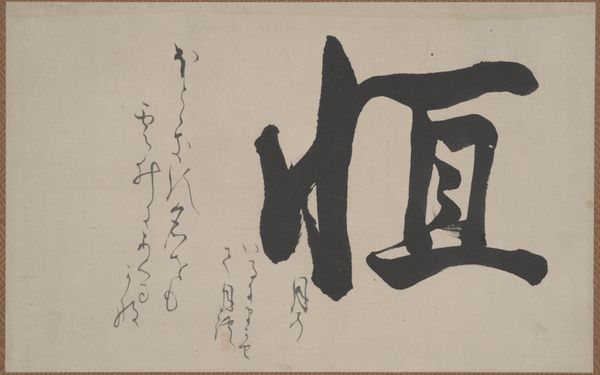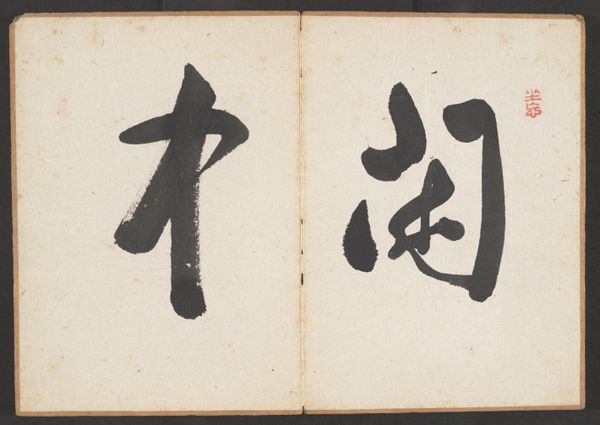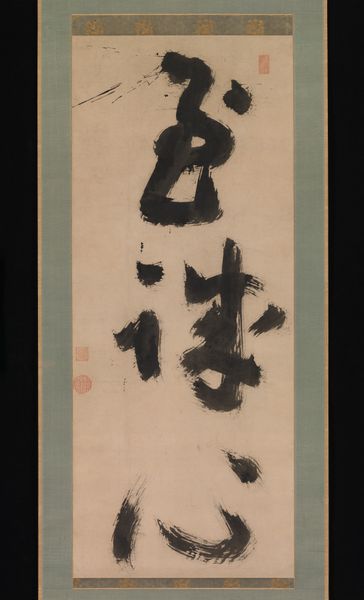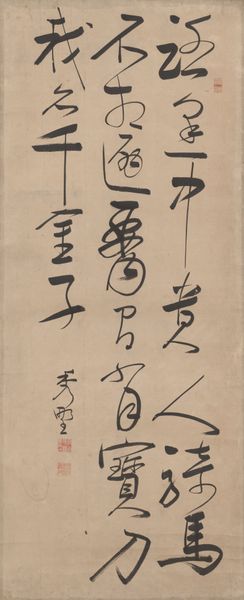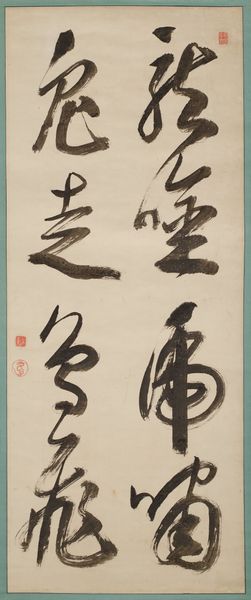
drawing, paper, ink
#
drawing
#
ink painting
#
asian-art
#
paper
#
ink
#
ancient-mediterranean
#
line
#
calligraphy
Dimensions: 11 3/8 × 19 1/16 in. (28.89 × 48.42 cm) (image)
Copyright: Public Domain
Curator: Before us, we have Window Snow by Kō Gentai, an ink drawing on paper dating to the late 17th or early 18th century. Editor: It’s striking how bold the brushstrokes are. Despite the spare composition, there's a real sense of dynamism and power. Is it meant to convey the harshness or the beauty of winter? Curator: The interplay of positive and negative space is quite compelling. The density of the ink creates a tangible weight, anchoring the calligraphy while also allowing the surrounding paper to breathe. It’s a careful orchestration of visual elements. Editor: It's impossible to separate calligraphy from its socio-political implications, though. Literacy and artistic skill were tied to class and privilege. What perspectives were silenced to create this artwork? Curator: An important question. Though, let’s not ignore the technical skill on display here. The variations in line thickness and the controlled application of ink are masterful. There’s an inherent tension between control and spontaneity. Editor: I find the calligraphic style simultaneously intriguing and alienating. I am drawn to what seems simple. Yet that simplicity holds untold secrets because of how much context I lack about this form. Curator: Exactly. The brushstrokes contain multitudes. In calligraphy, each line embodies not just aesthetic choices, but also a deeper philosophical intention. Editor: Ultimately, it represents a mode of communication which encodes social stratification. While lovely, we also need to analyze and understand these modes of elite articulation in that period of time. Curator: Precisely. Through line, texture, and form, Window Snow invites a visual conversation across time. Editor: Absolutely. We leave understanding the conversation itself up to the audience to seek out, discuss and ultimately engage with.
Comments
minneapolisinstituteofart almost 2 years ago
⋮
Kō Gentai’s father was a Chinese administrator who had left Japan after fathering a child there. Gentai spent ten years as a young man searching unsuccessfully for his father in China and then returned to Japan to become an interpreter. He studied medicine and became a health expert, serving the shogun in Edo (today’s Tokyo) from 1709–1721. Gentai was known for his cursive script. This calligraphy shows two characters of stark contrast. For “window” on the right Gentai used the character 牕 instead of 窗 or 窓 which is the variation in use today. He simply omitted the radical 心 at bottom right of 牕 and constructed the remaining elements primarily of straight and rectangular lines. “Snow” on the left is usually written with eleven strokes but here Gentai rendered it very fluid with only four. 牕雪Window Snow
Join the conversation
Join millions of artists and users on Artera today and experience the ultimate creative platform.


